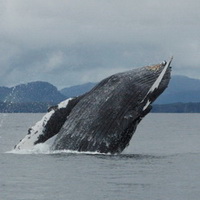
Essential Question:
* Is there an "Alaskan" culture? How could it be described?
In searching for an answer to the question, and as part of our weekly assignment, I spent time trying to understand more clearly what culture is. In my efforts I learned from Wikipedia that culture is a set of shared attitudes, values, goals, and practices that characterizes an institution, organization, or group. With this definition I would say that Alaska is a makeup of many different cultures. For example, during Module III we read about numerous Native groups that inhabit the areas of Alaska and have been here for centuries. Also, African Americans, Asian Americans, European Americans, Polynesians, and Latin Americans have immigrated to Alaska. They all have commonalities and unique differences that shape their dynamic cultures but to say that we have a blanket "Alaskan" culture is limiting.
 Not only is there not one specific "Alaskan" culture, it seems that there are many micro-cultures, or cultures within cultures, evident as I examine more closely. I have witnessed many different cultures existing where I live on Prince of Wales Island. All have changed over time and have done so because of the influence of other cultures.
Not only is there not one specific "Alaskan" culture, it seems that there are many micro-cultures, or cultures within cultures, evident as I examine more closely. I have witnessed many different cultures existing where I live on Prince of Wales Island. All have changed over time and have done so because of the influence of other cultures.Examine Question:
* In addition to the wave of Euroamericans who came to Alaska, what other groups emigrated to Alaska, and why?
African Americans, Asian Americans, Polynesians, and Latin Americans are some of the immigrants that came to Alaska. The reasons for coming are many. Let's look at one group at a time and examine the motivating factor for their arrival in Alaska.
*African Americans - There were several reasons for African American migration into Alaska. Many came because of military purposes, some came because of the Gold Rush, and early black immigrants came because of fur trade and whale hunting.
*Asian American - The Asians were early immigrants to Alaska, crossing the Bearing land bridge nearly 5000 years ago. The Filipinos were the largest Asian ethnic group to arrive in the area. They came on whale hunting ships, for fur trade, and to work in gold mines. But the majority of the Filipinos that came worked in the canneries.
*Polynesians - The Polynesians, most from the islands of Hawaii, began arriving around the 1700s when Captain Cook was exploring the Pacific. This ethnic group has been the fastest growing ethnic group in Alaska since the 1990s.
*Latin Americans - Spanish explorers came to the Alaska in the 1700s to see what the Russians were doing in the area. Some stayed. Also, many have immigrated to the state in recent years. The Latin Americans are the second largest minority group in the state.
Evaluate
I would have like to have spent more time exploring the materials in this module. Great resources! It was a very busy week for me. The busyness made it really difficult to thoroughly explore all the material and get my blog posted. I continue to have a busy schedule with a couple more days at the ASTE conference. I am learning some cool new technology but have been slammed with busy schedules and lots of cool information.
I love the content of the class and I am still trying to figure out how to create a good blog. Practice makes perfect, right?
Colleague Reviews for Module II
Investigate Alaska
I explored Betty Hanson's Investigate Alaska blog. She did a great job comparing and contrasting Native knowledge and Western science in her blog. Also, I enjoyed reading more about climate change and global warming.
Educational Exploration in AK
I experienced some of the same impressions as Kristin Ratigan as I worked through Module II. I knew very little about the troubles that were being faced in Shishmaref caused by climate change.
Gary's Alaska Blog
Gary put it well when he questioned whether individuals think about the impact of when the "SUV rolls to life". I think education is wonderful in the sense that it helps enlighten us about the impacts that are made globally because of human behaviors. This takes us back to the idea that we are all connected.






